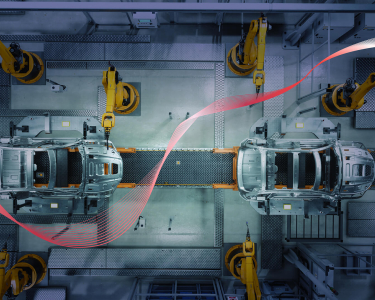SAP Enterprise Architect – A Trusted Advisor for Driving Business Value at Scale
Organizations today are facing changing global dynamics, economic uncertainty, and increasing customer expectations. They’re also finding their way through increasingly complex system landscapes, competing stakeholder priorities, a surge in AI-driven initiatives, and the emergence of diverse business models.
CxOs are facing challenges across various business functions. They need a trusted advisor who can reduce the risks of outdated systems, design a clear roadmap for transformation, and build a strong business case for S/4HANA migration. The advisor should also help speed up AI adoption and bring business and IT teams together by aligning operating activities with long-term goals.
This blog explores how the SAP Enterprise Architect guides CxOs through these challenges, helping organizations make smarter decisions and drive measurable business value.
Empowering Enterprise Architecture in an AI-Driven Landscape
As organizations adopt SAP’s Business Suite and shift toward an AI-first approach, they need expert guidance to fully realize the value of new SAP technologies and drive faster AI-led transformation.
Future developments will utilize AI to enhance and integrate systems, test new ideas through proof-of-concepts (POCs), and manage AI investments more effectively. As strategic decision-making and high-impact scenarios rely on data as the key asset, strong data governance, and AI strategies will remain vital in the enterprise architecture domain.
Enterprise Architects play an essential role in this transition by designing data-driven architectures, creating AI governance frameworks, and ensuring alignment between AI strategies and the business's architectural principles and objectives. Their expertise enables organizations to scale AI adoption, optimize system performance, and maximize returns from SAP investments.
Enabling Strategic Decision-Making
In 2025, technology-enabled growth, primarily driven by advancements in artificial intelligence, will become a top priority for business leaders. As organizations navigate this new reality, CxOs turn to Enterprise Architects as trusted advisors who can offer a clear and comprehensive understanding of complex IT environments.
The Enterprise Architect guides transformation initiatives by enabling quick and informed decision-making, ensuring alignment with business objectives, and maintaining oversight to avoid delays. The core value of an Enterprise Architect lies in the ability to filter vast application and data landscapes into actionable insights, empowering stakeholders to make well-informed, strategic choices.
Enterprise Architects approach design with agility by accepting change as a regular part of the transformation process. They create well-defined governance practices and clear architectural principles to support compliance, improve operations, and ensure system interoperability.
The Role of Enterprise Architect in SAP S/4HANA Transformation
Successful SAP S/4HANA transformations depend on a strong understanding of the organization’s business and operational models, the ability to adapt to changing market needs, and clear alignment with long-term goals. The Enterprise Architect guides how the IT environment will change and ensures a smooth and low-risk transition.
During the discovery and pre-project phases, the Enterprise Architect confirms key technology choices and assesses how recent SAP innovations align with business goals. They map the IT landscape, identify dependencies, and anticipate potential risks that could arise later in the transformation process. They offer a comprehensive view of applications, processes, data flows, and their connections, supporting well-informed decisions and smooth execution throughout the transformation journey.
Key contributions of the Enterprise Architect in S/4HANA transformation:
- Business Process Transparency: Reviews the current architecture to find gaps, assess risks, and match system capabilities with business goals. This helps improve visibility and supports ongoing improvements across the value chain.
- Target Architecture Definition: Builds a simpler, more cost-effective IT setup that can grow with the business through strategic consolidation of applications.
- Transformation Roadmap Definition: Creates a clear plan for each stage of the transformation process. They manage step-by-step rollouts, coordinate coexistence strategies, and plan go-live transitions.
- Data Volume and Migration Strategy: A well-planned data strategy ensures a seamless data migration to S/4HANA with minimal disruption.
Developing a Precise and Compelling Business Case
CIOs need a strong business case to secure funding for the SAP S/4HANA program. The Enterprise Architect analyzes the operating model that supports the organization’s business objectives, identifies value gaps, and recommends enhancements to strengthen performance and maximize the business value of information systems.
The business case outlines the expected costs and benefits of the transformation program. The Enterprise Architect works closely with CxOs to help them understand end-to-end, integrated processes and value drivers, and ensures the business case supports key strategic goals.
With this expertise, the Enterprise Architect ensures SAP S/4HANA investments deliver immediate results and support long-term business growth.
Aligning Business and IT Operations for Collaborative Transformation
The success of any transformation program relies on seamless collaboration between business and IT teams, driven by clearly defined roles and stakeholder accountability. The Enterprise Architect offers guidance from a strategic, enterprise-wide perspective—enabling cross-functional collaboration, improved communication, and cohesive decision-making based on shared organizational objectives.
Enterprise Architects help bridge operational activities with strategic visions by cultivating alignment between business and IT, encouraging innovation, and driving results.
EA expertise ensures IT initiatives align with business goals through careful planning and active involvement with stakeholders while minimizing risks and reducing complexity.
Accelerating Value Realization through Toolchain-Driven Business Transformation
Enterprise architecture frameworks and tools provide a clear and structured way to manage complexity while supporting continuous innovation. SAP Enterprise Architects use powerful tools to ensure S/4HANA programs stay on track and aligned with business goals. These include:
- SAP Signavio: Enables business process modeling, reviewing, and improving business processes to boost efficiency and identify areas for change.
- SAP LeanIX: Provides an up-to-date view of IT systems and application inventory by aligning them with business processes.
- SAP Cloud ALM: Supports every project stage, helping teams plan, implement, and monitor progress effectively.
These tools help Enterprise Architects manage S/4HANA programs, keeping them on track and aligning them with business goals.
Driving Business Impact with “Momentum that Multiplies”
Tech Mahindra’s 2025 SAP SAPPHIRE theme, "Momentum that Multiplies," showcases our commitment to accelerating innovation, achieving meaningful business outcomes, and creating new opportunities with SAP technologies. The theme showcases our ability to lead large-scale digital transformation across industries and regions, creating lasting value throughout the enterprise journey.
We empower our customers to lead end-to-end S/4HANA business transformation initiatives through Tech Mahindra’s next-generation ERP offerings, proprietary assessment tools, and a team of trusted SAP Enterprise Architects by delivering:
- Program Direction and Governance: Establishing process templates, business capability models, decision forums, and business case development.
- Future-State Architecture: Simplifying the IT landscape and designing flexible, AI-ready environments that lower costs.
- Integrated Data Flows: Streamlining data across SAP and non-SAP platforms throughout the value chain to support business-aligned AI strategies.
- Pre-Projects and Data Strategy: Supporting data cleanup, quality management, and well-structured migration plans.
- Transformation Roadmap: Developing phased timelines, sequencing implementations, managing coexistence strategies, and transition planning.
Conclusion
There is a need to emphasize the critical role of SAP Enterprise Architects in guiding organizations through complex transformations. They help CxOs make informed decisions, align AI strategies with business goals, and ensure seamless collaboration between business and IT teams to drive measurable business value.
Avanish is an experienced industry leader with 28 years in the SAP ecosystem, covering both business and IT roles. He has extensive expertise in developing and delivering sustainability-focused solutions across various industries, utilizing the power of SAP technologies, AI, and digital platforms to create measurable impact.Read More
Avanish is an experienced industry leader with 28 years in the SAP ecosystem, covering both business and IT roles. He has extensive expertise in developing and delivering sustainability-focused solutions across various industries, utilizing the power of SAP technologies, AI, and digital platforms to create measurable impact. He holds a bachelor’s degree in engineering from IIT Roorkee and a diploma in sustainable business strategy from Harvard Business School.
Read Less







